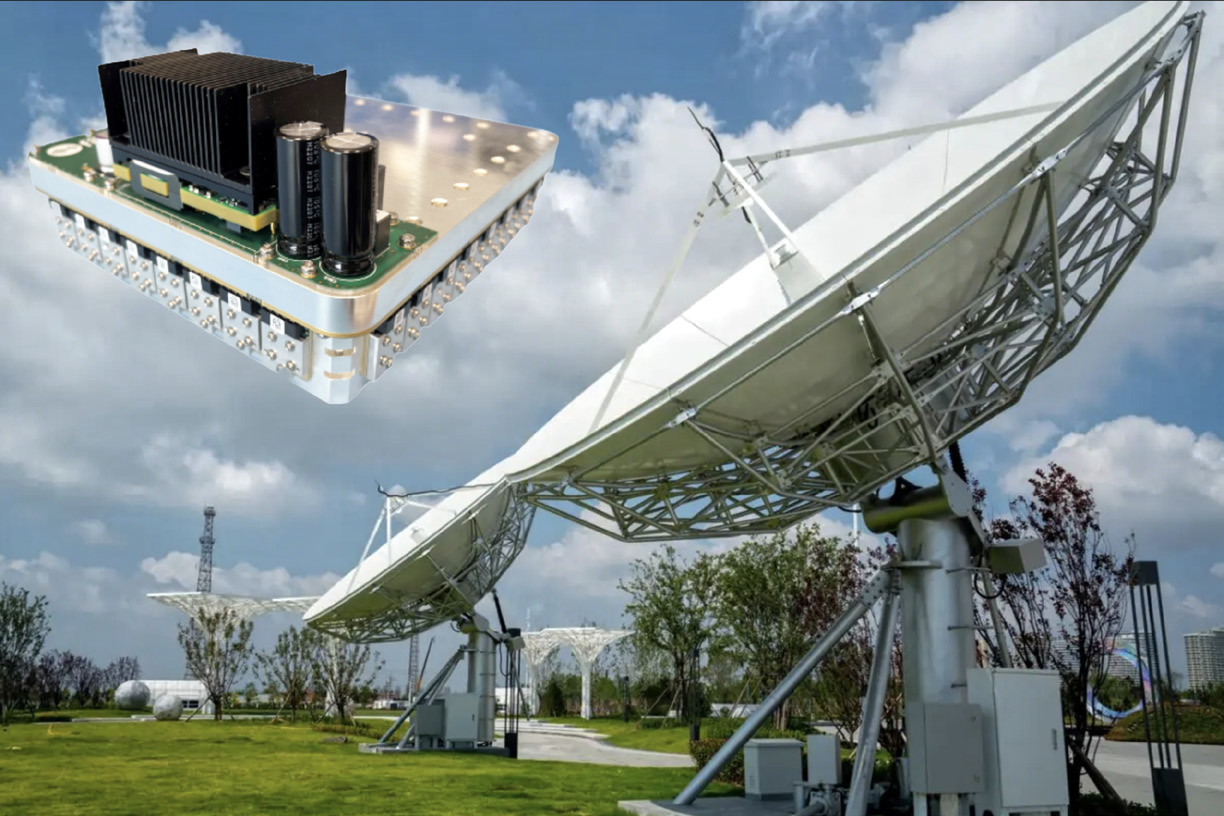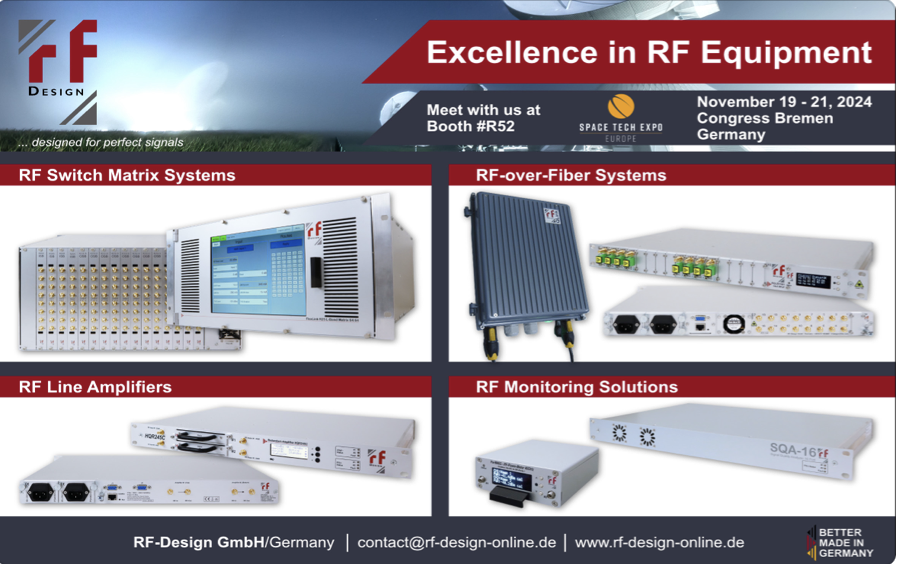Why agility is key in the New Space Market
Low earth orbit (LEO) has experienced significant growth in recent years, primarily driven by the expansion of satellite constellations for telecommunications, Earth Observation, internet connectivity and more.
 Filtronic’s Cerus power amplifiers offer industry-leading linear mmWave power for long-range E-Band and W-Band communications. Available in a range of configurations, from single to N-way, Cerus amplifiers deliver unmatched performance across various high-frequency applications. The Cerus series is available in 32, 8, 4, and 1-way E-Band modules.
Filtronic’s Cerus power amplifiers offer industry-leading linear mmWave power for long-range E-Band and W-Band communications. Available in a range of configurations, from single to N-way, Cerus amplifiers deliver unmatched performance across various high-frequency applications. The Cerus series is available in 32, 8, 4, and 1-way E-Band modules.
For companies that are new to the industry, it’s important to know what to look for when sourcing components and sub-systems for LEO projects. Dr Peter Krier, Director of Programs at designer and manufacturer of RF-t.o-mm-Wave components and subsystems explains how businesses venturing into the LEO market can ensure that they find the right supplier.
For companies operating in geostationary orbit (GEO) market, the need to source new suppliers and partners is rarely an issue. Heritage is extremely important in GEO projects, where it’s less about finding the most innovative and groundbreaking products, and more about ensuring that components and systems used are tried and tested in almost identical applications.
However, LEO is a much more disruptive market, often referred to as ‘New Space’ and can involve hundreds or even thousands of satellites and that requires a radically different approach.
With this in mind, companies are turning to commercial off-the-shelf (COTS) components to radically reduce cost while also improving availability and opening up newer, more capable parts. But, what should companies moving into the LEO market be aware of when sourcing COTS for space?
The big
difference
One of the main differences between sourcing components and subsystems for LEO and GEO lies in the sheer quantity of components required. While GEO systems may require only a few tens of subsystems, LEO constellations can demand thousands of satellites in a single constellation. Ignoring this discrepancy in component volume and making the same assumptions for LEO as you have done for GEO can cause the entire cost equation to fall apart.
GEO satellites may incorporate multiple redundant sub-systems to ensure operation over a 15 to 30 year lifespan, as launch costs for this far orbit are exceptionally high. A LEO constellation by comparison has much lower launch costs per satellite and that means redundancy can be realized at constellation level by provisioning flight ‘spares.’
Large quantities,
high standard
The recognition that fully ‘space qualified’ parts are un-affordable in such volumes has lead to a different approach, leveraging the components and processes used by manufacturers in industries demanding volume manufacture in high reliability industries, such as Telecoms and Defence.
Most important to consider is whether the supplier is used to making components and sub-systems in volume for high-reliability applications that should be demonstrable through field-data, from real-life applications. Added to that is the need to survive the rigors of the space environment. Established guidelines such as those provided by the European Space Agency (ESA) offer a baseline for assessing component quality.
These guidelines, coupled with thorough testing protocols, can instill confidence in the reliability of sourced components for LEO systems. Proprietary knowledge in this area is a key factor in achieving an affordable solution and finding a partner with this background is also crucial.
At Filtronic, we have field-data available from similar applications through our Telecoms and Defence products and that, by using the same processes to build products for space, we can guarantee the same quality and reliability level at high volumes. Additionally, we have more control because the design, manufacturing and testing is all completed under one roof.
In addition, we are building a library of commercial components that have been qualified to meet the harsh environment of Space, enabling us to offer a very cost effective design and manufacturing service.
These capabilities led to Filtronic winning a contract with the ESA after responding to a funding call in the area of Space for 5G/6G and Sustainable Connectivity.
The €3.7 million contract falls under ESA’s Advanced Research and Telecommunications Systems (ARTES) program which capitalizes on a company’s innovative idea and develops it into a successful commercial deployment, keeping Europe at the leading edge of the fiercely competitive, global SATCOM market.
In more recent times, Filtronic secured a long-term partnership and commercial agreement with SpaceX, a leader in the LEO market. The SpaceX partnership includes the ongoing supply of solid state power amplifiers (SSPAs) in conjunction with collaborative efforts in developing and delivering comparable products across multiple frequency bands that are core to SpaceX’s Starlink platform.

Filtronic’s roadmap is to develop advanced mmWave products for satellite payloads and gateway links from satellite to ground stations, providing ubiquitous broadband connectivity as a critical component for future telecom networks.
With more than 40 years of RF history, Filtronic is well placed to exploit the opportunities in the New Space market, where price and ability to manufacture, with high precision, at volume have become as critical as performance.
Seeking components that are affordable and suitable for LEO applications does not require any compromise on quality. Engaging with a specialist who provides innovative solutions as well as appreciates the cost implications of mass production can ensure customers receive top-notch quality without breaking the bank.
For more information on Filtronic’s expertise in high performance RF for space applications, visit filtronic.com/markets/rf-solutions-for-space/.

Dr. Peter Krier
Dr. Peter Krier is the Chief Scientific Officer at Filtronic, bringing over 30 years of expertise in RF, microwave, and mmWave technologies. He joined Filtronic Components Ltd in 1992, designing filters and subsystems for defence, before serving as Engineering Director at Filtronic Broadband. From 2008 to 2019, Dr. Krier worked at Teledyne Defence and Space as Chief Engineer and later CTO, where he was the design authority for key C-IED projects and the RF payload synthesiser for OneWeb GEN1 satellites. Returning to Filtronic in 2019 as Director of Programmes and latterly CSO, he continues to drive cutting- edge innovation across telecommunications, aerospace, defence, and space sectors.


